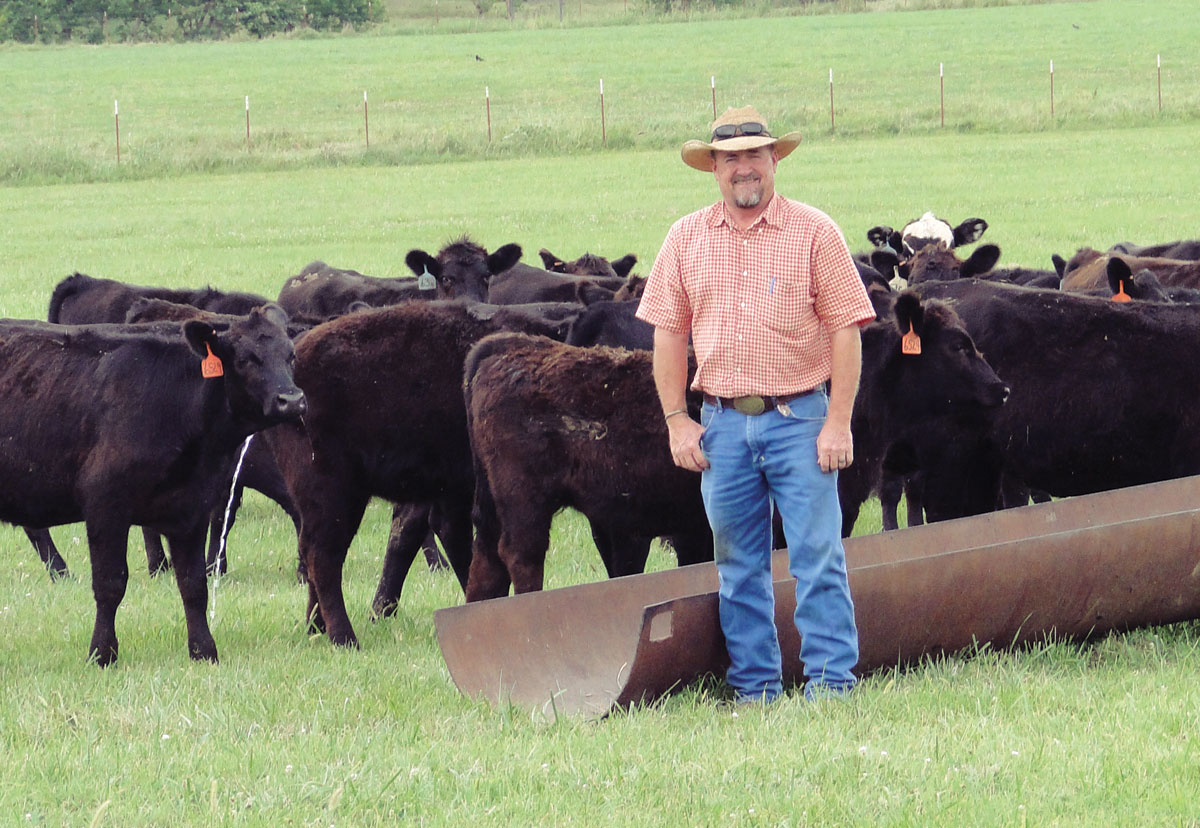
When Nathan Ogden was a youngster showing pigs and later playing ball, Steve Bartholomew from Prairie Grove, Ark., was always close by because Nathan went to school with Steve’s nephew. Then during high school, Nathan went to work for Steve’s family who owned the Washington County Livestock Auction in Fayetteville, Ark.
Now Nathan has his own 800-acre cow/calf ranch with 400 cows in Hogeye, Ark., and it’s Steve who works for Nathan as a ranch manager while Nathan spends the day running his construction company, Pick-It Construction in Fayetteville.
Steve comes by his ranching knowledge through generations of Arkansas ranchers. His great-grandfather, Bill Bartholomew, built the Fayetteville livestock auction on open land in 1936 that bordered the military cemetery. Through the years and the constant pressure of urban sprawl, the city surrounded the livestock auction which closed eight years ago after 73 years of servicing area farmers.
Steve and other family members ran the Washington County Livestock Auction, where he and his family helped area livestock farmers and ranchers with buying and selling their livestock. The family lived in Prairie Grove where Steve got his ranch experience because the family also had a feeder cattle, stocker cattle and cow/calf operation with up to 1,500 animals at a time. Steve and his two brothers, Mitch and Cary, worked alongside their father so that each son had the opportunity to learn every aspect of the cattle business, thus providing Steve with what he needed to know to manage the Ogden Ranch.
“The daily operation of a ranch this size is a lot of work, and Nathan supplies me with plenty of help like Ed Wallace,” Steve said.
One day Ed, who drove a truck carrying construction equipment for Pick-It Construction, saw Steve getting ready to rope a calf. Ed asked, “Why don’t you let me do that?”
Ed was close to 70 and Steve, at 57, was dubious but gave Ed the opportunity. Before Steve could blink, the calf was neatly roped.
“At that moment I knew I he could be the help I needed,” Steve said.
Then Ed laughed and added, “We’re the old men, and we can do the job.”
The two men work closely every day with temporary workers hired to put in fencing, hauling hay, spraying or whatever else needs to be done on the ranch. Fencing has become a priority as the ranch moves towards rotational grazing.
“We are at our max here in terms of the number of animals the land can productively support,” Steve said. “Rotational grazing allows the cattle to always have fresh grass which increases productivity.”
The 400 cows are comprised of 320 commercial cows and 80 registered black Angus cows. The commercial cows are serviced by 40 registered Hereford and black Angus bulls while the registered mommas are bred by AI performed by Steve and his son Colt.
Since the ranch produces 90 percent of its own bulls, AI provides the genetic diversity to keep the entire herd genetically sound. AI bulls are selected according to their purpose. If being bred to older cows, the bulls are selected for milkability and growth, but if needed for a heifer, low birth weight is the top priority. One significant characteristic of the Ogden herd is that the oldest cow is only four years old. Consequently, 20 to 35 percent of the heifers are retained each year to serve as replacements.
In addition to selling commercial calves, Ogden Ranch also sells registered Angus bulls and bred heifers by private treaty.
One change Steve brought to the ranch was the use of horses when working cattle. However, changing over was not a hard sell because Nathan had been raised around horses and loves them.
“I believe horses are the best way to work cattle because the cattle stay calmer which decreases stress,” Steve said,
Nathan is a highly organized and detail-oriented man meaning he follows his NRCS fertilization plan and maintains a high quality and strictly enforced health protocol in addition to keeping up with innovations. One of his recent additions is a paintball-like gun that is used as an additional means of fly and more recently worm control. The gun is used when the alternating regimen of pour on, injectable, oral, and supplemental rotational control methods are insufficient for individual animals. The advantage is that, once again, an already stressed animal is dealt with individually from a distance thereby maintaining less stress for the treated animal as well as those nearby. Nathan and his two girls, ages four and six, love to have father-daughter time when they go through the entire herd looking for animals to treat with the paint gun. A dart gun is also used to doctor animals for issues such as pinkeye and pneumonia from a distance while also making the task a one-man job, something important to Steve.
“I’ve done many things in my life, and I love anything that has to do with the land, including dirt farming,” he said. “Working with cattle, however, is my passion, and Nathan has given me the opportunity to return to what I love to do most.




